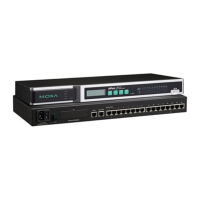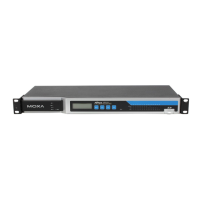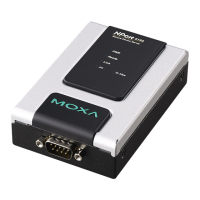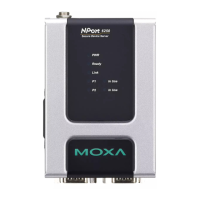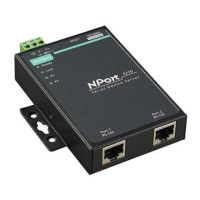Port Data Buffering/Log
The NPort 6000 supports port buffering to prevent the loss of serial data when the Ethernet connection is down.
Port buffering can be used in TCP Server mode, TCP Client mode, and Pair Connection mode. For other modes,
the port buffering settings will have no effect.
Port buffering enable (default=Disable): You may enable port buffering by setting this field to Enable.
Port buffering location (default=Memory(64K)): If port buffering is desired, use this setting to configure
whether the buffer is located in the system memory or in an optional installed SD card. Install and use an SD
card if a buffer size greater than 64 KB is desired. Note that optional SD cards are not supported on the NPort
6150.
Port buffering SD file size (default=1 Megabyte): Use this field to configure the size of the port buffer if
you have configured it to reside on an SD card. Note that optional SD cards are not supported on the NPort
6150.
Serial data logging enable (default=Disable): If this field is set to Enable, the NPort 6000 will store data
logs on the system RAM for all serial ports. Note that this data is not saved when the NPort 6000 is powered off.
Each serial port is allotted 64 KB to store that port’s log file.
Port Modem Settings
Modem settings are used for the Dial In/Out modes. These settings will have no effect on ports configured for
other modes.
Enable modem (default=Disable)
Initial string: Use this field to configure the initial string that the modem will use to establish the connection.
For example, AT&S0=1 for auto-answer.
Dial up: Use this field to configure the modem’s Dial-up AT command string.
Phone number: Use this field to configure the number that the user uses to dial out.
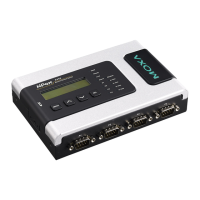
